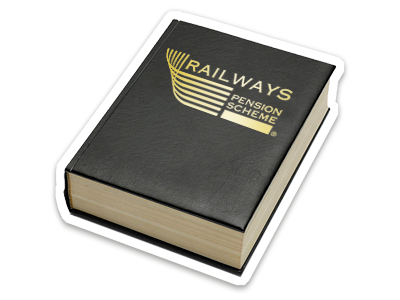About the Scheme
The Railways Pension Scheme was established in 1994, following the privatisation of the railways, providing pensions for members across the industry.

A member of the Railways Pension Scheme who is in the employment of a participating employer and is paying contributions into the Scheme and building up benefits under the Scheme.
A member who is no longer paying contributions. Their benefits are based on membership up to their date of leaving the Scheme. This person may have opted out of the Scheme or be no longer employed by a participating employer. Preserved benefits increase each April in line with the Pensions (Increase) Act 1971, and in line with your Scheme Rules, from the date that you become a preserved member.
The RPS was set up on 1 October 1994 during the privatisation of the railway industry and replaced the old British Rail Pension Scheme (BRPS).
During privatisation, a parliamentary order came into force which set out special protection for members. This protection largely applied to those people who were in the BR Pension Scheme at midnight on 4 November 1993. You can find out more about protected rights by visiting the Read as You Need guide to protected rights.
The RPS is divided into different arrangements and sections. Here are some of the main ones:
The Shared Cost Arrangement is a defined benefit pension or DB scheme and is split into a number of individual and separate sections all with their own benefit structures and rules. The sections' assets are combined into pooled investment funds, which mean they benefit from economies of scale in terms of management costs and access to a wide range of investments.
The IWDC Section is a defined contribution pension or DC scheme. This is one section which has multiple employers participating in the section. Contribution rates and Pension Ages may be different for each participating employer.
Anyone who was a preserved or retired member of the BRPS at the point of privatisation was entered into the 1994 Pensioners Section of the RPS.
Employers can participate in the IWDC Section and in more than one section of the Shared Cost Arrangement. They will advise Railpen (which administers the RPS) which section a member should join.
There is a single Trustee which oversees investments management and governance.
Movement of employees between participating rail companies is simplified, and it may be possible to change employer while staying in the Scheme. Check with your pensions administrator Railpen by emailing csu@railpen.com or telephone the Helpline on 0800 012 1117. Please quote your pension reference number in all communications with Railpen.
If you're a member of the RPS, you can easily find out which type of pension you have. Simply register and/or log in to your myRPS account, then check the information in your dashboard.
The RPS is administered by Railpen, which is a wholly-owned Trustee subsidiary. Railpen provides the RPS with overall governance and management.
Railpen performs three distinct functions:
Its services include a full range of administration and payroll, as well as client relationship management, communications, digital services, governance, secretariat and technical support.
Railpen works closely with employers with Sections in the Scheme to provide support and keep them fully informed of developments either within the Scheme or the wider pensions industry. This helps to ensure they are aware of how any changes may impact them or their employees.
The Scheme needs to have enough money or assets to pay out pension benefits, so a Valuation is carried out regularly to ensure this is the case.
Check out the library of Scheme documents, which includes the Statement of Investment Principles and also key Scheme stats.
Discover more about the Trustee, which has overall responsibility for running the Scheme.